
|
|
|
|
|
|
Classic Bikes
Custom Bikes
Individual
Racing Bikes AJP
AJS
Aprilia
Ariel
Avinton / Wakan
Bajaj
Benelli
Beta
Bimota
BMW
Brough Superior
BRP Cam-Am
BSA
Buell / EBR
Bultaco
Cagiva
Campagna
CCM
CF Moto
Combat Motors
Derbi
Deus
Ducati
Excelsior
GASGAS
Ghezzi Brian
Gilera
GIMA
Harley Davidson
Hero
Highland
Honda
Horex
Husaberg
Husqvarna
Hyosung
Indian
Jawa
Kawasaki
KTM
KYMCO
Laverda
Lazareth
Magni
Maico
Mash
Matchless
Mondial
Moto Guzzi
Moto Morini
MV Agusta
MZ / MuZ
NCR
Norton
NSU
Paton
Peugeot
Piaggio
Revival Cycles
Roland Sands
Royal Enfield
Sachs
Sherco
Sunbeam
Suzuki
SWM
SYM
Triumph
TVS
Ural
Velocette
Vespa
Victory
Vincent
VOR
Voxan
Vyrus
Walt Siegl
Walz
Wrenchmonkees
Wunderlich
XTR / Radical
Yamaha
Zero
Video
Technical
Complete Manufacturer List
|
|
| . |
| CZ 250 Custom | 1978 |
| CZ 250MX | 1971 |
| CZ 471 | 1974 |
| CZ VMX Racing | 1987 |
1937 CZ 250 Tourist
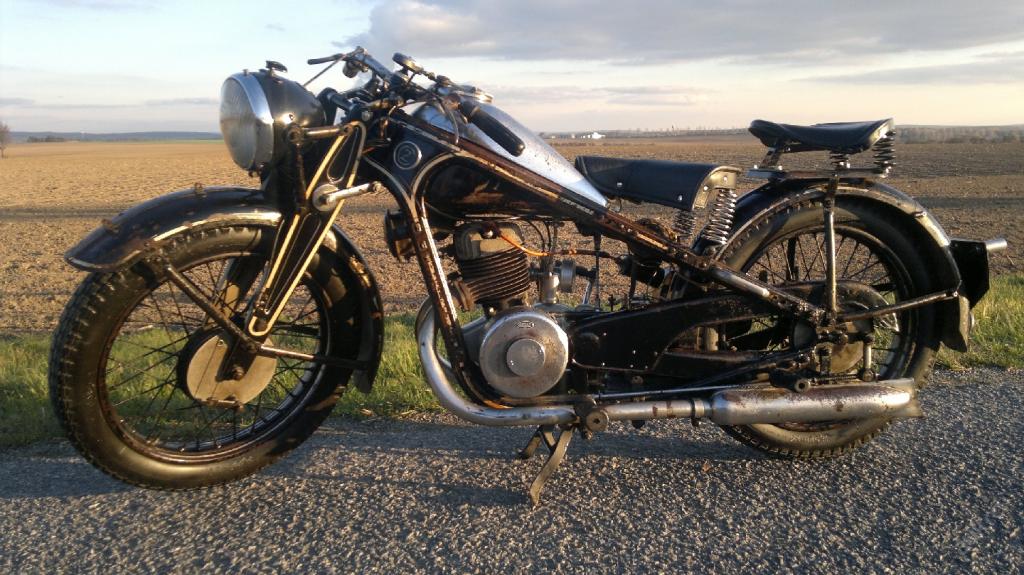
Factory developed progressively more finished and elegant bikes, as this beautiful 1937 "250 Touring"
1939 CZ 250 Sport
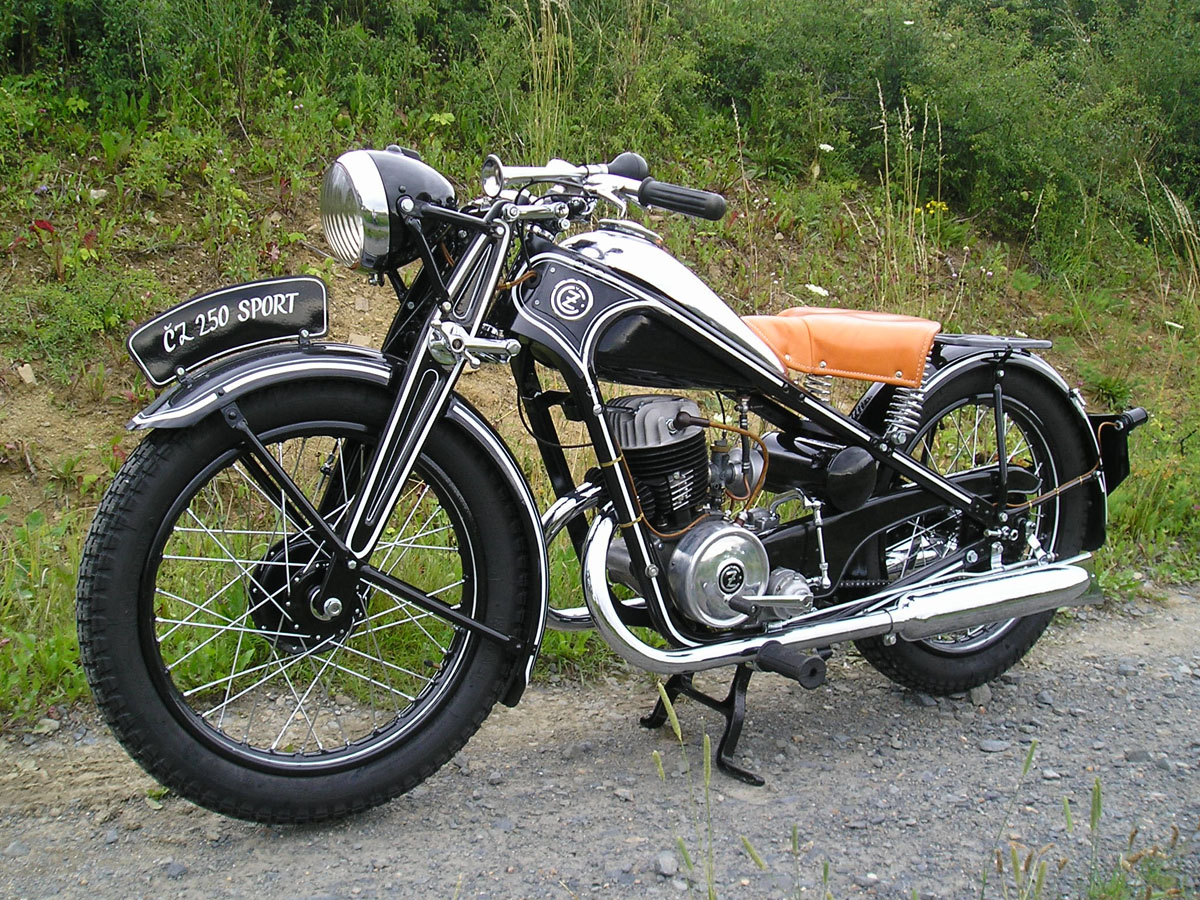
The CZ 250 Sport model was introduced in 1937. It basically had an identical frame and chassis as the CZ 175 type, into which a larger engine was built.
From 1957 CZ Cezeta 175-Typ 502 scooter
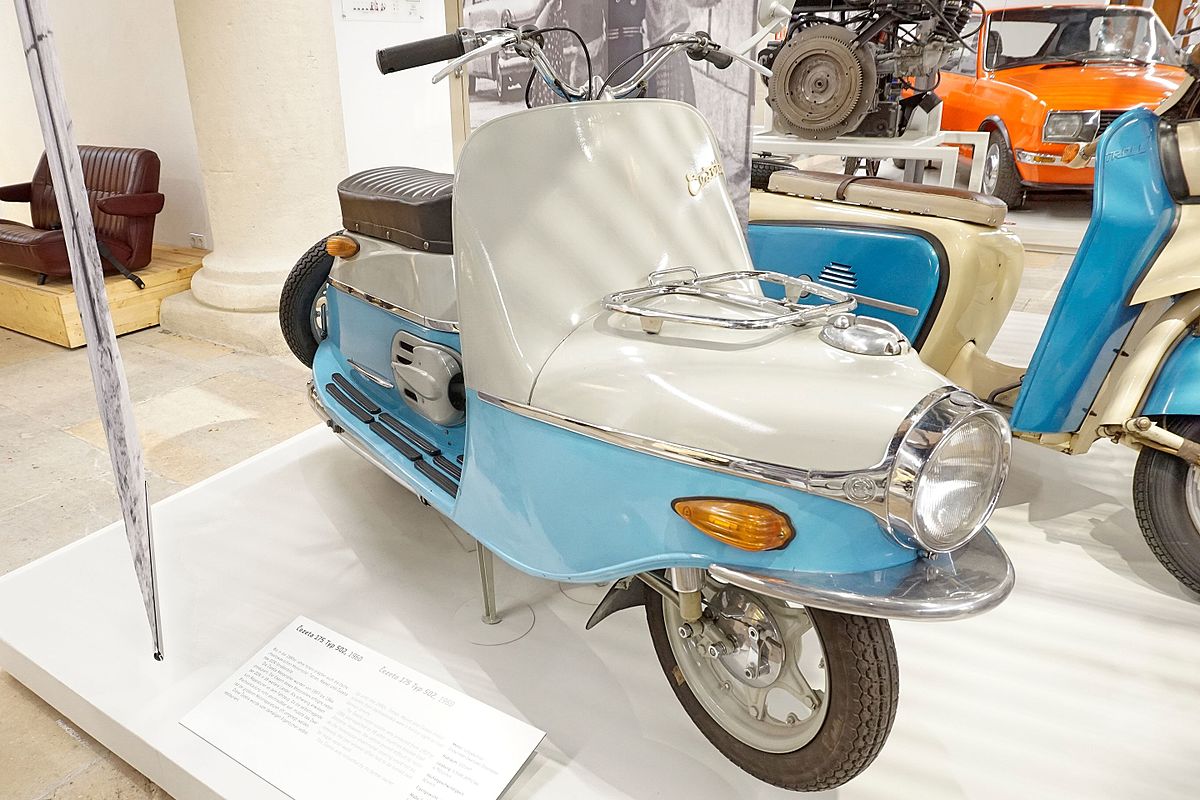
The original design of the Cezeta scooters were unique. It had a substantial
luggage compartment, using space that in most scooters is occupied by the fuel
tank. The fuel tank is positioned above the front wheel, with the
headlight fitted into a recess and a luggage rack on the flat top surface.
1964 CZ 125 Two-cylinder
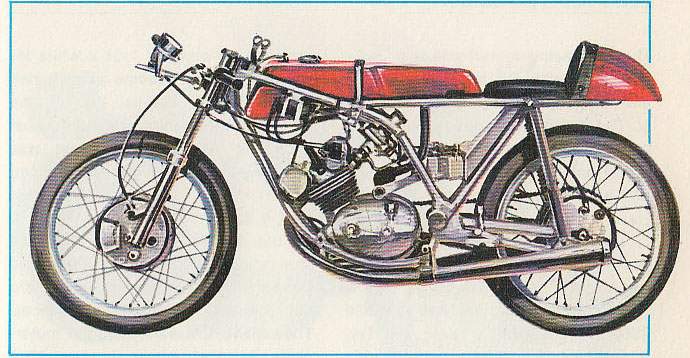
Jawa was not the only Czechoslo-vakian company to go into speed racing. There was also CZ, a company closely linked to Jawa.
One of the first CZ racing engines, a four-stroke
single-cylinder, was built in 1955 in 125-cc, 250-cc, and
350-cc. versions. It was a compact Italian-style engine with
two-shaft bevel gear distribution, oil in the crankcase, and
block transmission. The three versions generated 14.5, 24, and
30 h.p., respectively.
The CZ 125 was extremely lightweight (about 165 pounds), which
made up for its modest power. It entered its first race in 1955,
winning a brilliant second place at the Swedish Grand Prix.
It was built after the fashion of the Italian Mondial and MV,
but the CZ was not on a par with the competition. In 1964 CZ
brought out a new 125 that was clearly modeled after the Jawa
350. It retained the four-stroke system but had two cylinders
instead of one. The new Va -liter made its debut at Modena that
same year. The engine generated 24 h.p., but the motorcycle,
which was at least five years out of date, put in a
disappointing performance. The two-cylinder 125, like the
single-cylinder version, was short-lived. After these failures
CZ turned to the four-cylinder engine.
Motorcycle: CZ 125 Two-cylinder Manufacturer: CZ, Strakonice
Type: Racing Year: 1964
Engine: CZ two-cylinder, four-stroke, with two-shaft overhead
bevel gear distribution. Displacement 124.6 cc. (45 mm. x 39.2
mm.)
Cooling: Air
Transmission: Six-speed block Power: 24 h.p.
Maximum speed: Over 115 m.p.h.
Chassis: Double cradle, continuous, tubular. Front and rear,
telescopic suspension
Brakes: Front and rear, central drum
1966 CZ 125 Works DOHC
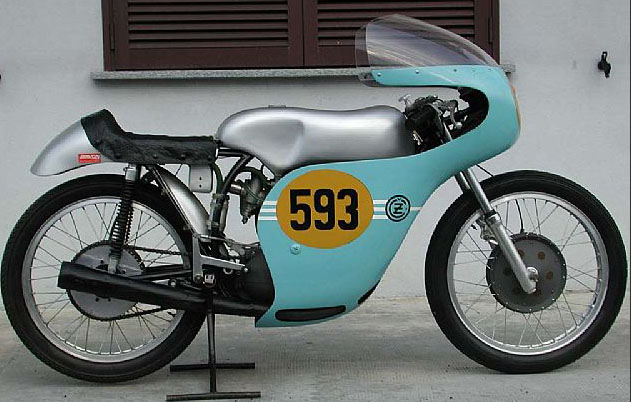
1970 CZ 350 V
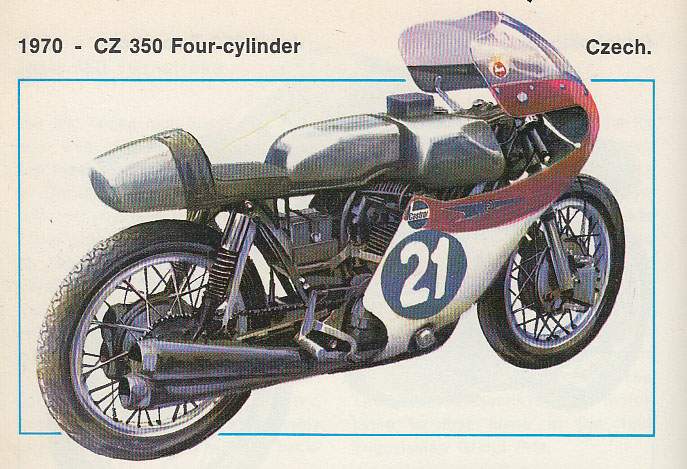
Four stroke works Single from 1966, DOHC, only 8 of this model were constructed by the official CZ racing department.
After 1965 Czechoslovakia made a dramatic advance in the development of Grand Prix technology. Jawa built its two-stroke, four-cylinder 350 and sister company CZ built a four-stroke, four-cylinder 350. Both seemed good enough for international competition.
The CZ 350 V was ready for the 1969 Czechoslovakian Grand Prix, and the motorcycle looked altogether new. The cylinders were set at about 90°, with the front cylinders almost horizontal and the rear ones slightly tipped back. There was two-shaft overhead distribution, with four valves per cylinder.
The chassis of the CZ 350 V was carefully styled, following an original design, and the accessories were Italian. The motorcycle's total weight was barely 300 pounds.
The technicians working for CZ managed to get 52 h.p. out of the 1969 prototype. The following year they got 58 h.p., which was enough to enable it to compete with the better private Yamaha 350s, albeit not with the MV or the official Yamahas.
Unfortunately the CZ racer, Bohumil Stasa, was not on a par with the best private racers. He had only one satisfactory placing, coming in second behind Jarno Saarinen at the 1971 Czechoslovakian Grand Prix.
Motorcycle: CZ 350 Four-cylinder Manufacturer: CZ, Strakonice Type: Racing
Year: 1970
Engine: CZ four-cylinder V, four-stroke, with two-shaft overhead geared
distribution and four valves per cylinder. Displacement 314.1 cc. (50 mm. x 40
mm.)
Cooling: Air
Transmission: Eight-speed block Power: 58 h.p. at 13,500 r.p.m.
Maximum speed: —
Chassis: Double cradle above, tubular, open below. Front and rear, telescopic
suspension
Brakes: Front, central drum, four shoes, four-cam; rear, central drum, double
cam
1973 CZ 250
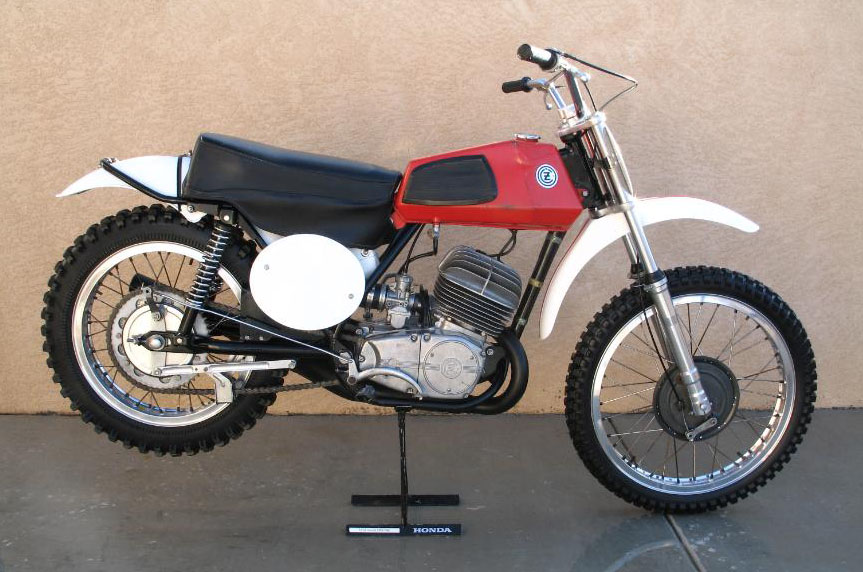
CZ enjoyed a great deal of popularity in the US during the late 1960's and early
1970's. If you raced motocross, CZ was the bike to have. It remained that way
until mid 1973 when the Honda Elsinore 250 arrived. Sales would never be the
same for the Czech factory and by 1976, CZ's were seldom seen on American
motocross tracks.
1973 was the first year of the coffin tank.
This bike is fairly original with
the exception of the front fender which has been replaced with a reproduction
plastic item. The Jikov carburetor was replaced with a Mikuni when the bike was
first sold. This was a common practice for dealers as was changing out the
points ignition for an electronic one.
1974 CZ Prototype Falta GP of 1975, CZ 250 Moto-cross (typ980.5)
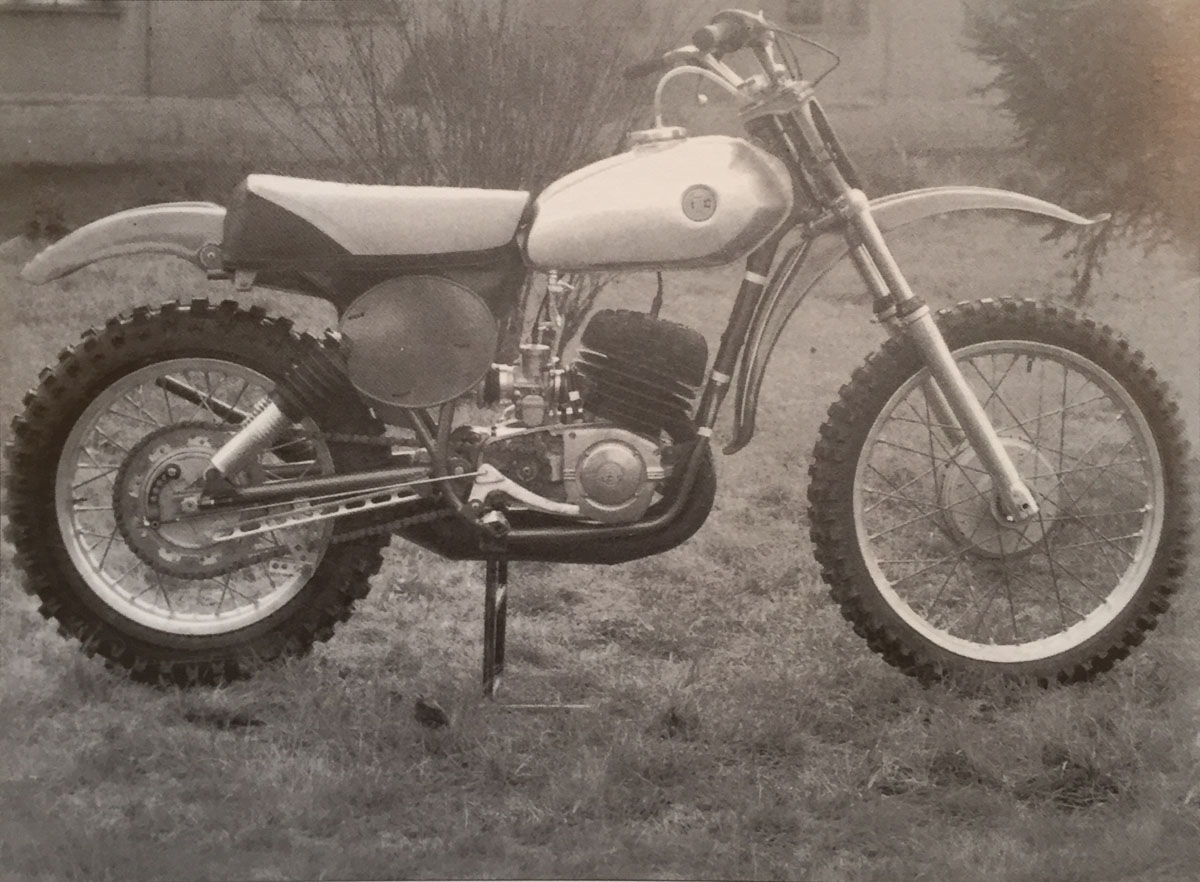
This was the bike that CZ won the constructor championship with. With a Mikuni
VM 36 carburetor.


|
Any corrections or more information on these motorcycles will be kindly appreciated. |